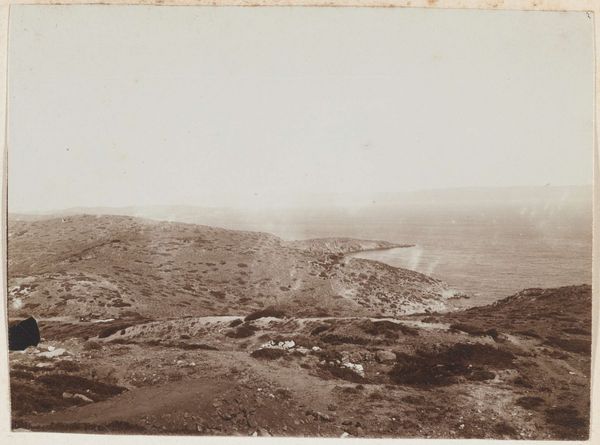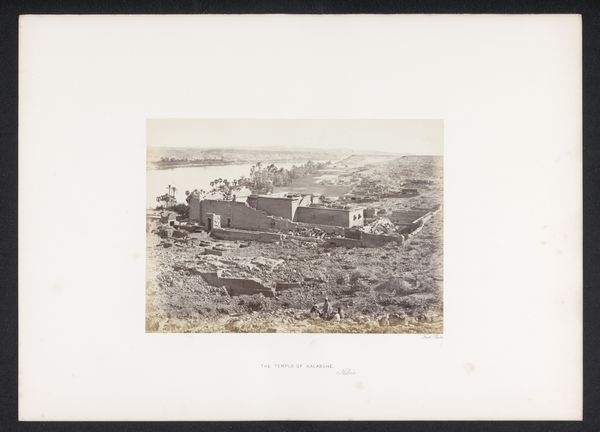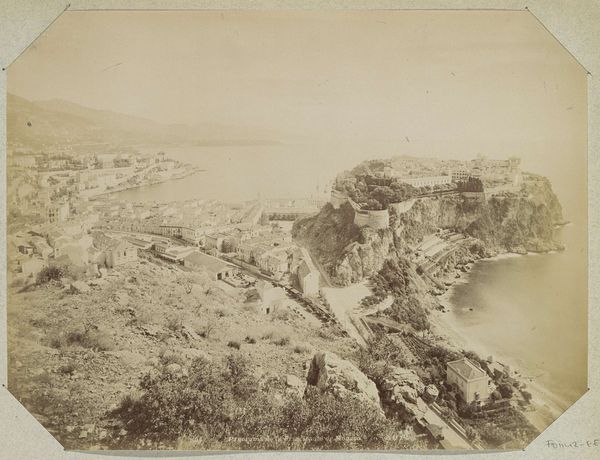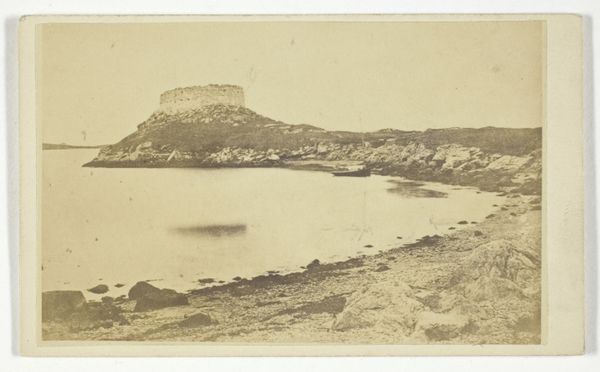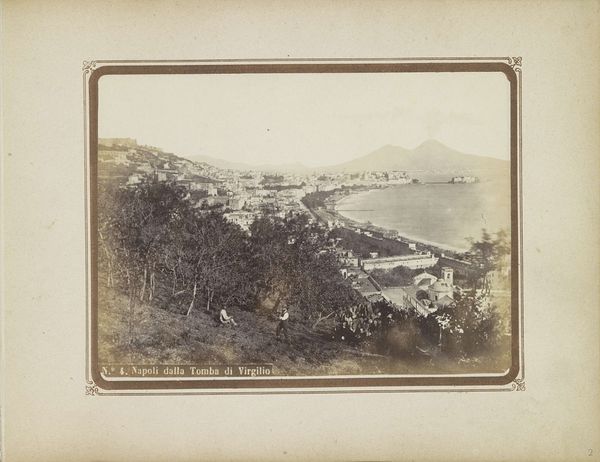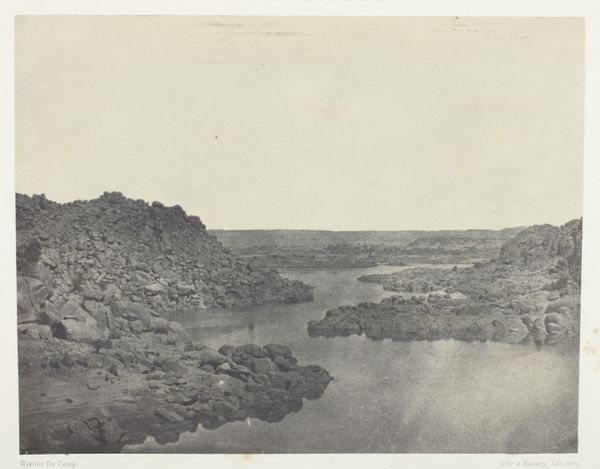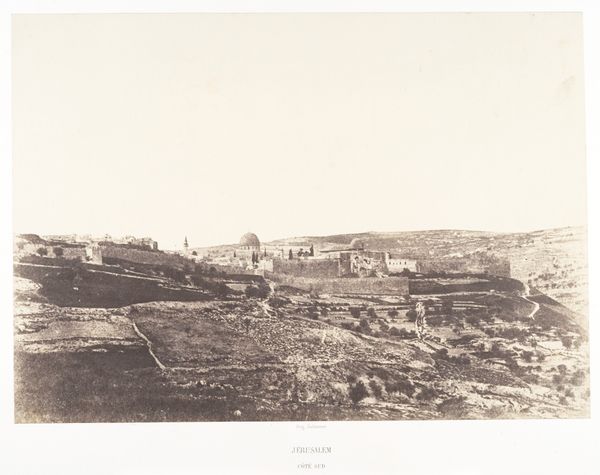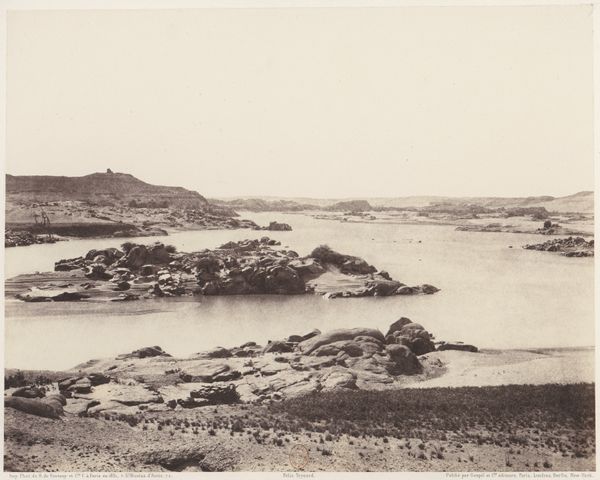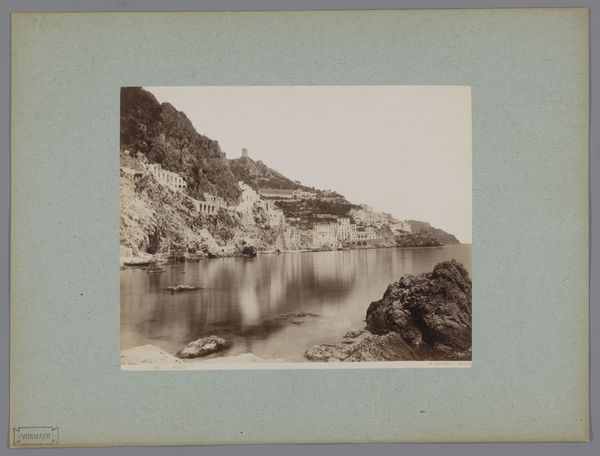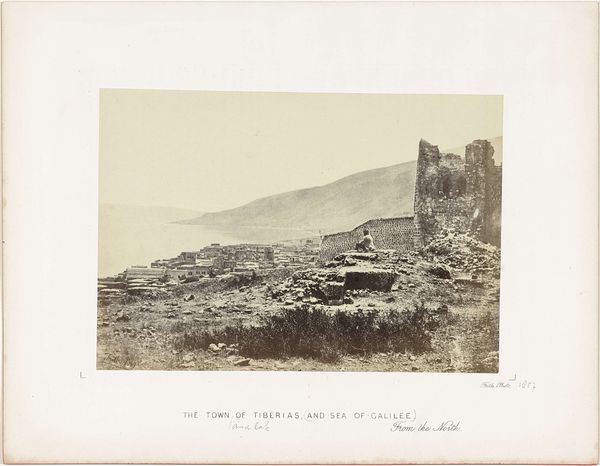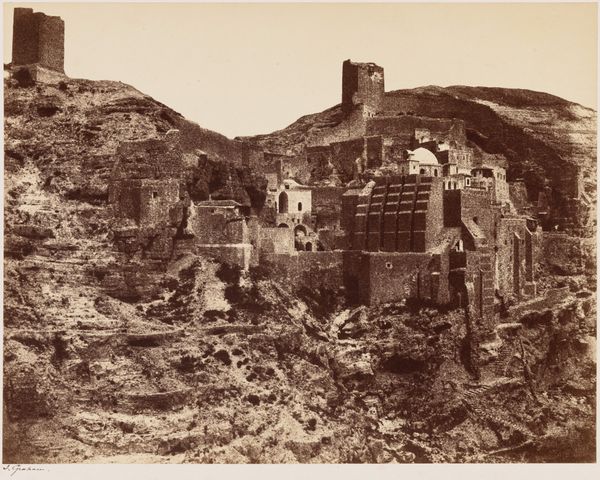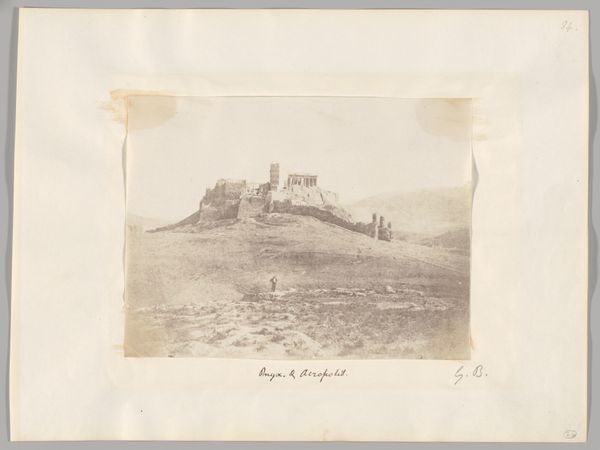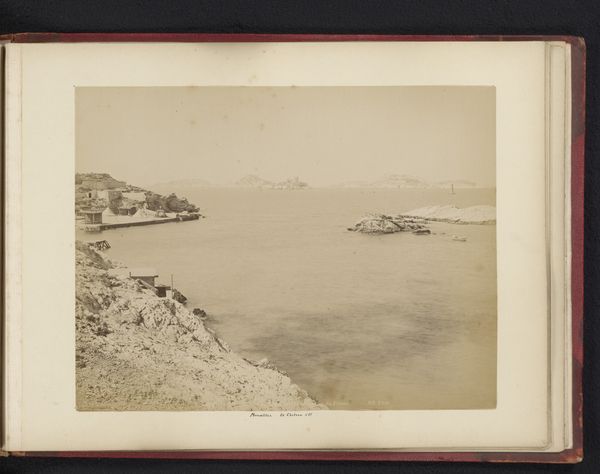
#
photo of handprinted image
#
muted colour palette
#
photo restoration
#
white palette
#
unrealistic statue
#
muted colour
#
pastel tone
#
watercolour illustration
#
soft colour palette
#
watercolor
Dimensions: height 205 mm, width 258 mm, height 249 mm, width 304 mm
Copyright: Rijks Museum: Open Domain
Curator: Here we have a fascinating example of Giorgio Sommer’s work. This albumen print, entitled “Landscape with ruins near Catania, Sicily”, dates sometime between 1857 and 1914 and is currently housed here at the Rijksmuseum. Editor: It’s really dreamy, almost like looking at a faded memory. The colors are so muted, and the scene, that rock formation with the structure on top… it feels so lonely. Like a lost world. Curator: Absolutely. Sommer was part of a larger movement interested in documenting and often romanticizing landscapes across Europe, but the material choices and his technique here speak volumes. Albumen printing itself was a laborious process, often involving many hands, a global trade in egg whites for the photographic emulsion. This one especially hints at a sense of constructed image-making because of its unique palette. Editor: Constructed… that's interesting. There is something artificial about the light, as if it’s too soft, too evenly spread. Even the ruins, they feel like a theatrical backdrop more than a historical artifact, in part because it has such a matte surface. Curator: It's an intriguing tension, isn't it? On one hand, we have the claim of photography as a "true" representation of the world, but then this particular print, in its subtle manipulations of tone and composition, reminds us of the labor involved in producing the photograph. There is no way it's a simple capture of reality because it must travel a complicated path through labor. The very method of creating a durable print using materials available to him indicates his vision. Editor: That’s the core, I suppose, finding beauty not just in the subject, but the quiet diligence, the time folded into this small piece of paper. And isn’t that the root of artistic inspiration? To translate life through our hands? It speaks to something eternal, the artist's persistent effort, mirroring the ruin's endurance over centuries. Curator: Yes, beautifully put. Sommer is, through his laborious technique and compositional decisions, reminding us of his role as an artist— shaping our very perception and understanding of both landscape and history through this fascinating process. Editor: Thinking about the making helps the image itself vibrate, doesn't it? Knowing something of what this man invested in capturing what to me is an image that hints at silence.
Comments
No comments
Be the first to comment and join the conversation on the ultimate creative platform.
